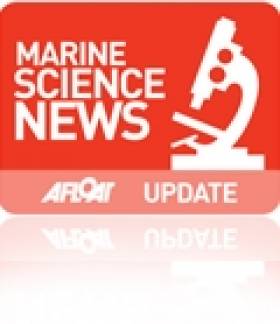Displaying items by tag: RV Tonn
#marinescience – Minister of State with responsibility for Natural Resources at the Department of Communications, Energy & Natural Resources, Joe McHugh T.D., today formally commissioned the INFOMAR Programme's new survey vessel, naming her the RV TONN at the Poolbeg Yacht, Boat Club & Marina.
As part of Ireland's national marine mapping initiative, the INFOMAR programme carries out hydrographic & geophysical surveys of Irish territorial waters. It is a cooperative programme between the Geological Survey of Ireland and the Marine Institute and is funded by the Department of Communications, Energy and Natural Resources.
Minister McHugh said "The INFOMAR programme is unique among the various projects funded by my Department, DCENR, in that, for 6 - 8 months of the year, the Infomar team of marine survey specialists live and work among the Irish coastal communities around the entire coast of Ireland." The Minister went on to say one of the achievements of the INFOMAR programme is the focus on disseminating new information on the Irish offshore, which is available free on the http://www.infomar.ie/data/ website. The Minster added "A really good example of the applied use of INFOMAR data is the smartphone App produced jointly by the Irish Underwater Council and INFOMAR, which affords a user access to The Wild Atlantic Way/Dive & Snorkelling sample locations.
The RV Tonn, is named appropriately after the Irish for wave, as it both operates on the waves and uses sound waves to investigate the depth and nature of the seabed. It is a new state of the art vessel, only 8 metres in length, but purpose built to carry out very shallow survey work. It was built by Cheetah Marine in the Isle of Wight after an open tender process.
This new vessel, RV Tonn, will support the completion of the first phase of the Infomar Project's mapping of three priority Areas and 26 priority bays, by the end of 2015.
Welcoming the launch, Koen Verbruggen, Director of the Geological Survey of Ireland, said "Up-to-date advanced mapping, facilitates greater awareness of Irish marine opportunities."





























































